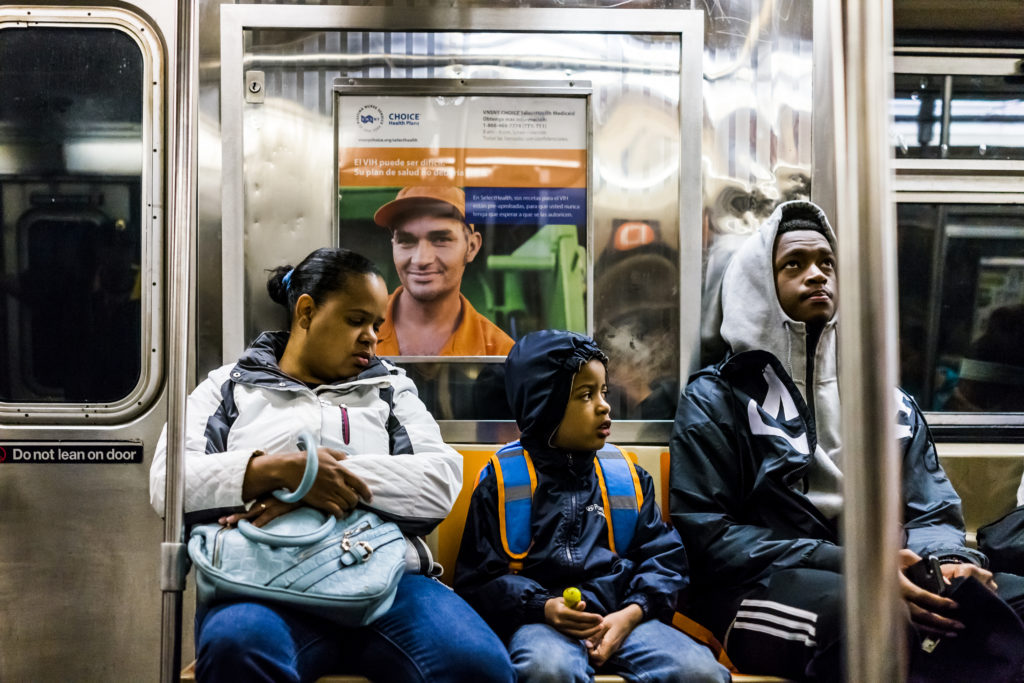Recent data suggest that over 30% of children in the United States of America (US) will be a part of a child welfare investigation by the time they turn 18 (Human Rights Watch, 2022). The nature of these investigations is broad, ranging from reports of suspected abuse to investigations into known harms. The most common forms of child maltreatment include neglect and parental substance abuse, which accounted for 75% and 34% respectively of all child removal cases in 2019 (Human Rights Watch, 2022).
International human rights standards
The US’ child welfare challenges have attracted scrutiny at the international level. In 2022, The United Nations Committee on the Elimination of Racial Discrimination expressed concern about the high numbers of minority children enrolled in foster care throughout the country (United Nations Committee on the Elimination of Racial Discrimination, 2022).
There is, however, a challenge in this regard. The Committee on the Rights of the Child – the global standard setter on children’s rights – has repeatedly emphasised that family separation should be a measure of last resort in instances of child maltreatment (Human Rights Watch, 2022). However, the US has signed but not ratified the Convention on the Rights of the Child (CRC), meaning the country has expressed intent to comply with its provisions, without committing to any binding obligations to implement change (United Nations Committee on the Elimination of Racial Discrimination, 2022).
As such, provisions outlined within the CRC, such as Article 19 which stresses that poverty ‘should not be used as justification for separating children from their parents’ and protects a child’s right to be cared for by their parents ‘so far as is possible’, remain unimplemented within the country (Human Rights Watch, 2022).
Protecting the undefined – what is child welfare?
The child welfare system’s inconsistent funding mechanisms are, however, merely one part of a wider challenge. The architecture of policies which make up the system often obstructs rather than enables family reunification. Authorities can, for instance, place children in foster care and bill parents for this cost (Augsberger, 2022). In the absence of a clear definition, child welfare systems disproportionately punish families in poverty by evaluating their contextual challenges as ‘neglect’ (Naveed, 2022).
Almost three quarters of all child welfare referrals relate to neglect, and these include frequent instances of parents failing to meet secure stable housing or being forced to work long hours: examples of common challenges for the average US citizen (Naveed, 2022). Framing child abuse in this way allows for the country’s poorest populations – and particularly those from minority ethnic backgrounds who are more likely to be investigated, even where the poverty rate is low – to fall victim to neglect investigations.
The families are seldom provided the legal means to adequately challenge these processes at crucial early stages (Naveed, 2022). This phenomenon has been described as the ‘weaponization’ or ‘politicisation’ of the child welfare system (Knispel, 2020).
Child welfare in action
Beyond the written regulatory frameworks that make up the child welfare system, its actors create further challenges for some of the country’s most vulnerable populations. Child welfare interventions often commence with the reporting of an incident or observation to national hotlines. These can be anonymised to encourage reporting, although this can also lead to false reports with little avenue for verification (Human Rights Watch, 2022).
Once an investigation is triggered – nearly 3.5 million children were investigated in 2019 – authorities seldom take sufficient care to guard against the possibility of trauma and negative sociological impacts (Human Rights Watch, 2022). Spontaneous home or school visits, body checks and invasive searches can stigmatise a child and compromise their relationships, while simultaneously imposing psychological harm (Human Rights Watch, 2022).
These investigations often occur without judicial oversight and away from legal protections, leaving primary carers without support during the early stages of child welfare interventions and vulnerable to exploitation (Human Rights Watch, 2022). Instead, investigative work is often carried out by social workers who have an inherent conflict of interest.
On the one hand, they are responsible for supporting parents and families, on the other they are the prosecutors of malpractice (Human Rights Watch, 2022). Judicial officers and judges’ rule on the potential reunification of fostered children, but by this stage caregivers have had their homes ripped apart with little effort made by the system to support parents and carers in looking after their children (Human Rights Watch, 2022).
A national problem
Problems stemming from the child justice system are felt across and throughout the entirety of the US. This is perhaps best illustrated by the large number of children removed from their homes and placed into foster care following maltreatment. A child is placed into foster care approximately every three minutes throughout the country, and over a quarter of a million children enters the system each year (Human Rights Watch, 2022).
As of 2019, 70,000 children were awaiting adoption due to the termination of their parents’ rights. These “legal orphans” lack permanency and face grave risks to their long-term health – a direct contradiction to the stated purpose of the children’s welfare system (Human Rights Watch, 2022).
The scale of the child welfare challenge has not gone unnoticed. The US government invested $33 billion into the system in 2018 and the Biden administration widened tax credits for families with children, ensuring most were able to claim over $3,000 from a child’s birth up to the age of 17 (Augsberger, 2022).
The financial injections did not stop there: economic stimulus payments supported most families across the country following the COVID-19 pandemic, and further financial aid was provided in the form of a ‘Needy Families’ scheme which supplied temporary assistance to roughly 20% of the population’s poorest families (Augsberger, 2022). However, the Congress has allowed the successful child tax credit system to expire (Augsberger, 2022). The ‘Needy Families’ scheme has therefore seen its funding reduced by up to 40%, creating vast discrepancies in the support families are able to obtain: a family of three in Alabama may receive as low as $215 relative to an equivalent home in New Hampshire (Augsberger, 2022).
Systemic racism towards minority children in the US

Due to its close links to economic equality, the child welfare system unfairly prejudices children from minority backgrounds. Further, families in impoverished communities are more exposed to social services because they require help. Recent analysis suggests the wealth gap between black and white families in the US was the same in 2016 as in 1968, and may have even increased following the COVID-19 pandemic (Human Rights Watch, 2022).
Despite making up just 14% of the country’s child population, black children are named in a quarter of all child abuse or neglect cases and over 20% of the children in foster care are black (Human Rights Watch, 2022). In some States this fact is even more exaggerated: in New York, nearly 40% of all foster children are black despite representing 15% of the population. By contrast, white children make up less than half of the foster system despite comprising around 50% of the overall child population (Human Rights Watch, 2022).
Racial inequities are not limited to black and African American children. Indigenous children have long-endured aggressive indoctrination as the US has worked to pressure children in native schools towards assimilating into newer American cultural values and beliefs (Human Rights Watch, 2022). This process has seen traditions broken and ways of life disrupted, leading to overwhelming numbers of Native American children in out-of-home care facilities.
Ways forward
United Nations Guidelines on Alternative Care establish that the “removal of a child from the care of the family should be seen as a measure of last resort and should whenever possible, be temporary and for the shortest possible duration” (Human Rights Watch, 2022). At present, the child welfare system in the US directly contravenes this statement, forcing communities to escape the trappings of poverty if they want to maintain the primary care of their children (Naveed, 2022). To restore families and prevent the unnecessary placement of children into the foster care system, the US must (Human Rights Watch, 2022):
- Curtail mandatory reporting requirements to reduce the over-scrutinization of impoverished communities and place a greater focus on reducing interventions by supporting families in need.
- Seek to maintain, so far as possible, family unity, focussing on addressing economic hardship and systemic racial inequities.
- More acutely define child abuse and neglect to separate the risk of child maltreatment from the consequences of poverty.
- Collect more accurate data on the inequities of the child welfare system to increase awareness and identify avenues for positive change.

Humanium has always advocated for a world where children’s rights are respected and protected, and where no child should ever suffer the effects of family separation. Discover how to stand up for children’s rights, join our community, interact with our work, and spread the word through our website, Facebook page or newsletter!
Written by Vanessa Cezarita Cordeiro
References:
Augsberger, A., & Collins Elizabeth, M. (2022. June 15). “POV: US child welfare system is falling short because of persistent child poverty.” Retrieved from Boston University Centre for Innovation in Social Sciences, accessed on 18 January 2022.
Human Rights Watch. (2022, November). “If I wasn’t poor, I wouldn’t be unfit. The family separation crisis in the US child welfare system.” Retrieved from Human Rights Watch, accessed on 18 January 2023.
Knispel, S. (2020, December 11). “American child welfare system has lost its way, says Rochester historian.” Retrieved from University of Rochester News Centre, accessed on 18 January 2023.
Naveed, H. (2022, December 8). “The child welfare system needs an overhaul.” Retrieved from American Civil Liberties Union, accessed on 30 January 2022.
United Nations Committee on the Elimination of Racial Discrimination. (2022, September 21). “Concluding observation on the combined tenth to twelfth reports of the United States of America.” CERD/C/USA/CO/10-12. Retrieved from Committee on the Elimination of Racial Discrimination, accessed on 31 January 2023.
United Nations General Assembly. (2010, February 24). “Guidelines for the alternative care of children.” A/RES/64/142. Retrieved from United Nations General Assembly, accessed on 31 January 2023.


